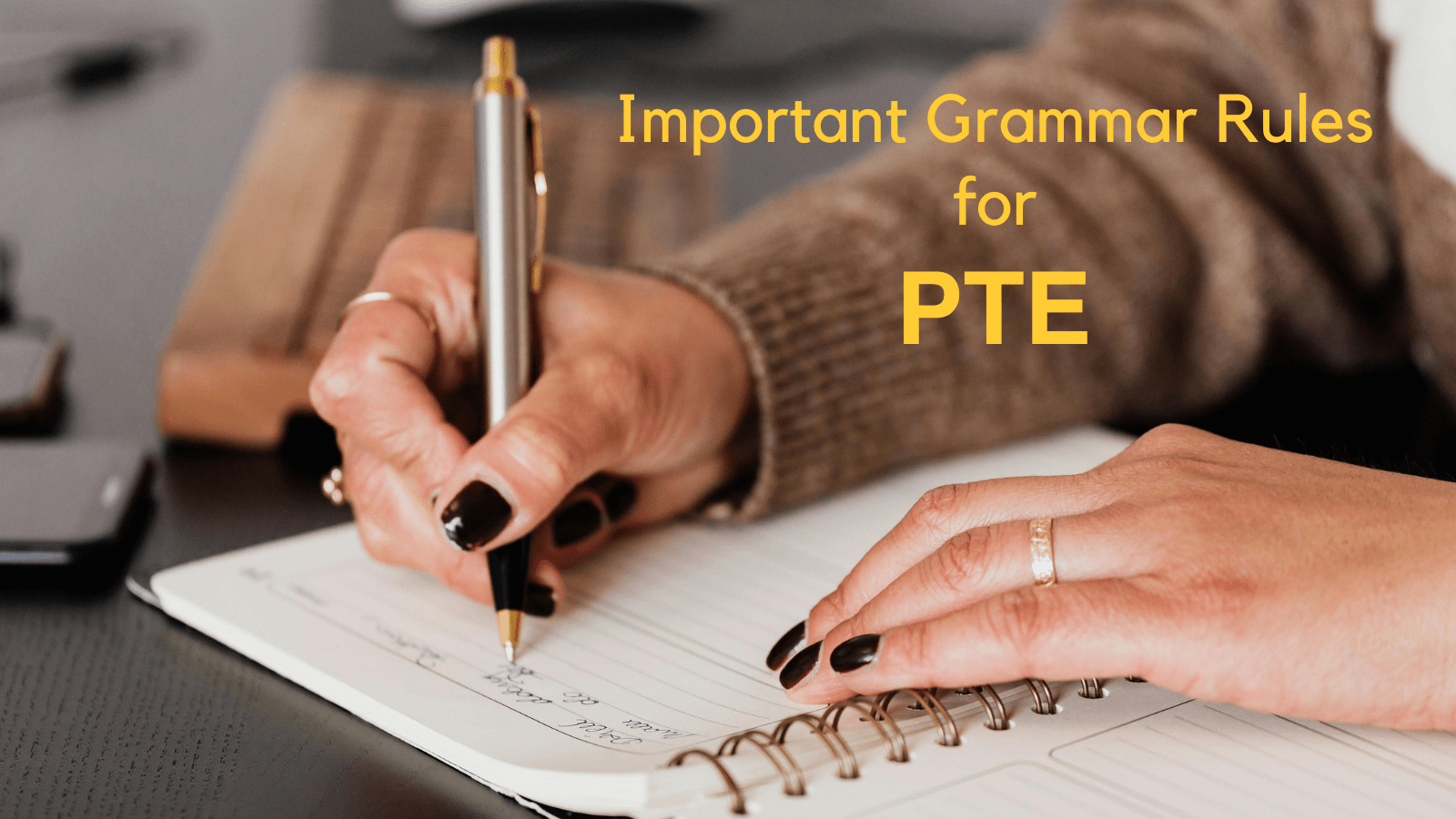Grammar is the foundation of language proficiency and plays a vital role in the Pearson Test of English (PTE) exam. A thorough understanding of grammar rules empowers you to express ideas accurately and effectively in both written and spoken English. In this comprehensive guide, we will delve into essential grammar rules, providing detailed explanations and examples to help you master them and succeed in the PTE exam.
Subject-Verb Agreement:
Subject-verb agreement ensures that the subject and verb in a sentence match in terms of number (singular/plural) and person (first, second, or third). This rule establishes grammatical harmony within a sentence.
Example:
- Singular subject: The boy dances.
- Plural subject: The boys dance.
More examples:
- He plays football.
- They play football.
- He is/was a football player.
- They are/were football players.
- He has played football.
- They have played football.
- He does not play football.
- They do not play football.
To Understand:
- Singular Subject — Singular Verb & Plural Subject — Plural Verb
- Singular verb has ‘s’ after the base verb (eg: play (plural verb), plays (singular verb)
Verb Tenses:
Understanding verb tenses is crucial for expressing actions or states of being accurately. Familiarize yourself with the various tenses, including:
- Simple Present: I work.
- Simple Past: She studied.
- Simple Future: They will go.
- Present Continuous: He is writing.
- Past Continuous: We were talking.
- Future Continuous: She will be singing.
- Present Perfect: They have arrived.
- Past Perfect: He had finished.
- Future Perfect: We will have completed.
- Present Perfect Continuous: She has been studying.
- Past Perfect Continuous: They had been playing.
- Future Perfect Continuous: He will have been working.
Articles:
Articles (a, an, the) provide specificity and clarity to nouns. Learn when and how to use indefinite (a, an) and definite (the) articles to accurately refer to people, places, objects, or ideas.
Example:
- Indefinite article: I saw a cat.
- Definite article: I saw the cat.
Pronouns:
Pronouns replace nouns, preventing repetition and adding fluency to your language. Use them appropriately to maintain clarity and avoid redundancy.
Example:
- Personal Pronouns: I, you, he, she, it, we, they.
- Possessive Pronouns: mine, yours, his, hers, ours, theirs.
- Reflexive Pronouns: myself, yourself, himself, herself, itself, ourselves, yourselves, themselves.
- Demonstrative Pronouns: this, that, these, those.
- Relative Pronouns: who, whom, whose, which, that.
Comparative and Superlative Forms:
Comparative and superlative forms help compare two or more items or express the highest degree of something. Understanding these forms enables you to make accurate comparisons.
Example:
- Comparative: He is taller than his brother.
- Superlative: She is the tallest student in the class.
Rule 1: Have/Has/Had + Past Participle (V3)
- Explanation: Use “have,” “has,” or “had” with the past participle (-ed or third form) to indicate actions in the past or present perfect.
- Example:
- They have visited the museum.
- She had finished her meal.
Rule 2: Am/Is/Are/Was/Were + Past Participle (V3)
- Explanation: After these verbs, use the past participle (-ed or third form) for actions in the past or passive voice.
- Example:
- The cake was baked by her.
- They were amazed.
Rule 3: Be/Being/Been + Past Participle (V3)
- Explanation: After forms of “be,” use the past participle (-ed or third form) for continuous tenses or passive voice.
- Example:
- The song has been played.
- She is being praised.
Rule 4: Preposition ‘to’ + First Form of the Verb (V1)
- Explanation: Use the base or first form of the verb after “to” to express purpose or actions in the infinitive form.
- Example:
- I want to learn a new language.
- She loves to dance.
Rule 5: Preposition ‘with/of/for/about’ + Verb-ing
- Explanation: After these prepositions (except “to”), use verbs ending in -ing to describe associations, reasons, or discussions.
- Example:
- She is talented at playing.
- Let’s talk about going to the event.
Rule 6: Articles (a/an/the) + Noun
- Explanation: “A” or “an” introduces a general noun, while “the” specifies a particular one.
- Example:
- An apple fell.
- The cat is sleeping.
Rule 7: Article + Adjective + Noun
- Explanation: Use articles before an adjective and a noun together to describe specific attributes.
- Example:
- He bought a new house.
- She wore an elegant dress.
Rule 8: Modal Verb + First Form of the Verb
- Explanation: Modal verbs (can/could/will/would/shall/should/may/might/must/have to) are followed by the base form of verbs and express various levels of possibility or necessity.
- Example:
- She can swim.
- He must finish the task.
Rule 9: Modal Verb + be + v3
- Explanation: Modal verbs with be afterwards are followed by the third form of verbs in most of the situations (check future continuous for exception).
- Example:
- The work will be completed on time.
- A letter must be written to the president.
Rule 10: It/Which/That + Singular Form of the Verb -s/-es
- Explanation: After “it/which/that,” use singular verbs with -s or -es to match subjects for clarity.
- Example:
- It takes hours.
- She bought a book that contains a lot of information.
Rule 11: Conjunction Rule
- Explanation: Ensure that the verb form remains consistent before and after a conjunction to maintain sentence flow.
- Example:
- My sister will sing and dance.
- He is sitting on the sofa and watching the television.
Rule 12: Adverbs of Frequency + Base Verb
- Explanation: Adverbs of frequency (always, often, usually, sometimes, rarely, never) are used with the base form of verbs to indicate how often an action occurs.
- Example:
- She always exercises.
- They rarely talk.
Rule 13: Indirect Questions – If/Whether
- Explanation: When reporting a question indirectly, use “if” or “whether” before the question word (who, what, when, where, why, how).
- Example:
- She asked if I knew her name.
- He wondered whether they had finished.
Rule 14: Gerunds after Prepositions
- Explanation: After prepositions, use gerunds (verbs ending in -ing) to indicate actions associated with a noun.
- Example:
- He is interested in learning.
- She apologized for arriving late.
Summary:
- Have/Has/Had + v3
- Am/Is/Are/Was/Were + v3/v4
- Have/Has/Had + been + v3/v4
- Be/Being/Been + Past Participle (V3)
- to + v1
- Preposition ‘with/of/for/about’ + v4
- Articles (a/an/the) + Noun
- Article + Adjective + Noun
- Article + Adverb + Adjective + Noun
- Modal verbs + v1
- Modal verbs + be + v3
- It/which/that + singular form of the verb (-s/-es)


